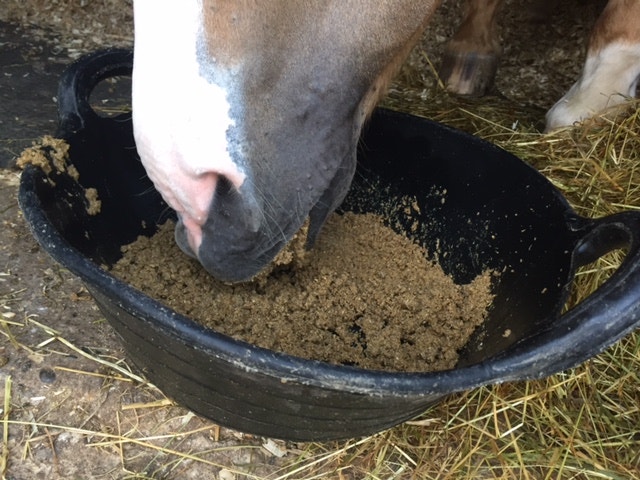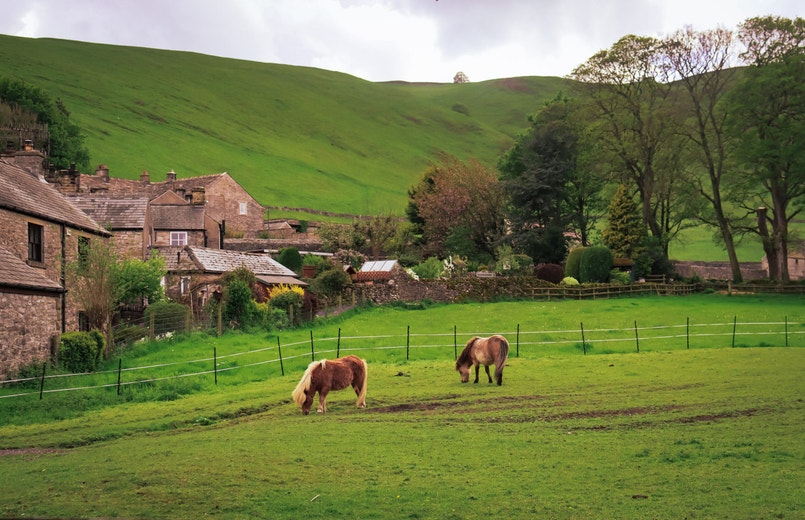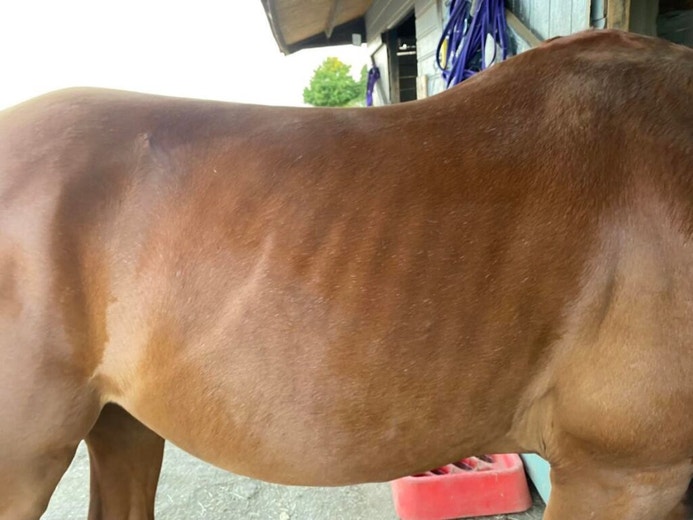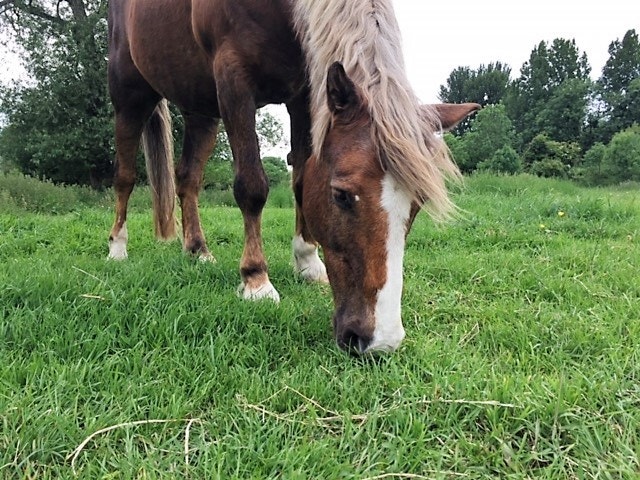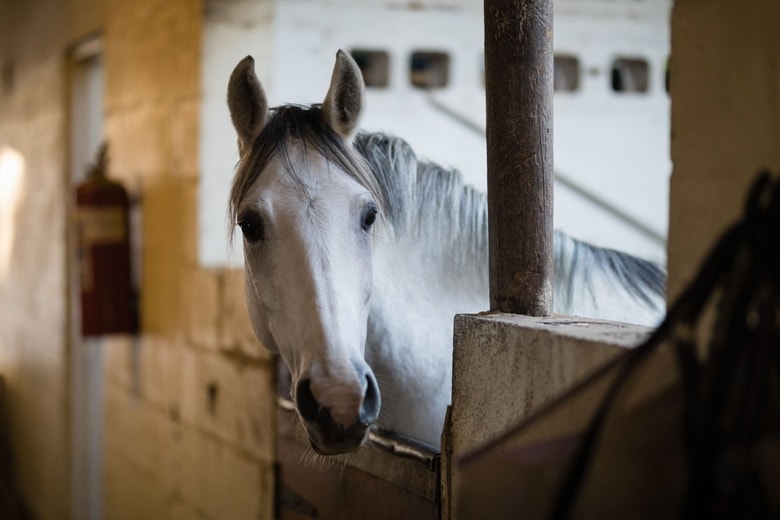Worried about winter weight loss?
SPILLERS strategies to help you keep your horse looking fab this winter!
In this blog we explore feed options, look at effective winter management strategies, and provide expert tips to help you keep your poor doer in a healthy condition all year round.
Feed Forage First
Forage should be the foundation of every horse’s diet whenever possible. It supports excellent digestive health and mental wellbeing and also provides a significant source of calories! Provide as much forage as your horse or pony will eat (while being mindful of excess waste). If you give your horse a haynet every night and they polish it off, offer them an extra half net. Feeding more forage seems obvious but you’d be surprised how many people get set in their ways.
Keep a close eye on how much forage your horse is actually eating; not just how much you are giving them- are they trampling it into their bedding? Some horses are just not great forage lovers, if you haven’t tried already perhaps offer them haylage, or a mix of hay and haylage to see if they find it tastier, or you may want to try them with forage replacers. Remember to make changes gradually, as you would a hard feed, and don’t forget to provide hay or haylage in the field when grazing is limited or poor quality.
Dental Discomfort
If your horse is eating less forage than usual, eating more slowly or looks at all uncomfortable chewing, then it may be time to get their teeth checked. Dental issues are a common cause of weight loss, especially in senior horses. For some horses with dental problems there may be a time you need to consider replacing some or all long fibre (grass, hay and haylage) with a hay replacer. See our separate blog on hay replacers here(open in new tab). Don’t forget to ensure their worming management is up to date too!
Energy = Calories
When we talk about our horse’s needing more calories it’s important to remember that in equine feeds calories are labelled ‘megajoules of digestible energy’ - often abbreviated to ‘MJ DE/ kg’ Hence, energy and calories are the same thing, calories are simply a measurement of energy. Feeds containing 7-10 MJ DE/ kg can be described as ‘low calorie’ (similar to average UK hay), whilst those containing 12- 13MJ DE/ kg are ‘high calorie’. Aim to feed your poor doer a feed which is higher in calories. Feeds with ‘conditioning’ on the bag are the obvious choice, but there may be better options for your horse.
Consider Energy Sources
The more you feed your horse, the more energy they are consuming, it’s like putting fuel in a car, for sensitive horses finding the right sort of fuel makes the world of difference. Energy is supplied by several nutrients – primarily fibre, fat (oils), sugar and starch. Fibre and oil are considered non heating energy sources, so look for feeds high in fibre and oil if you have a sharp or excitable horse. Laid back horses may do better with some cereal starch in their diet. Although this should be avoided if they’re prone to laminitis, EMS, PPID, tying up, gastric ulcers or similar.
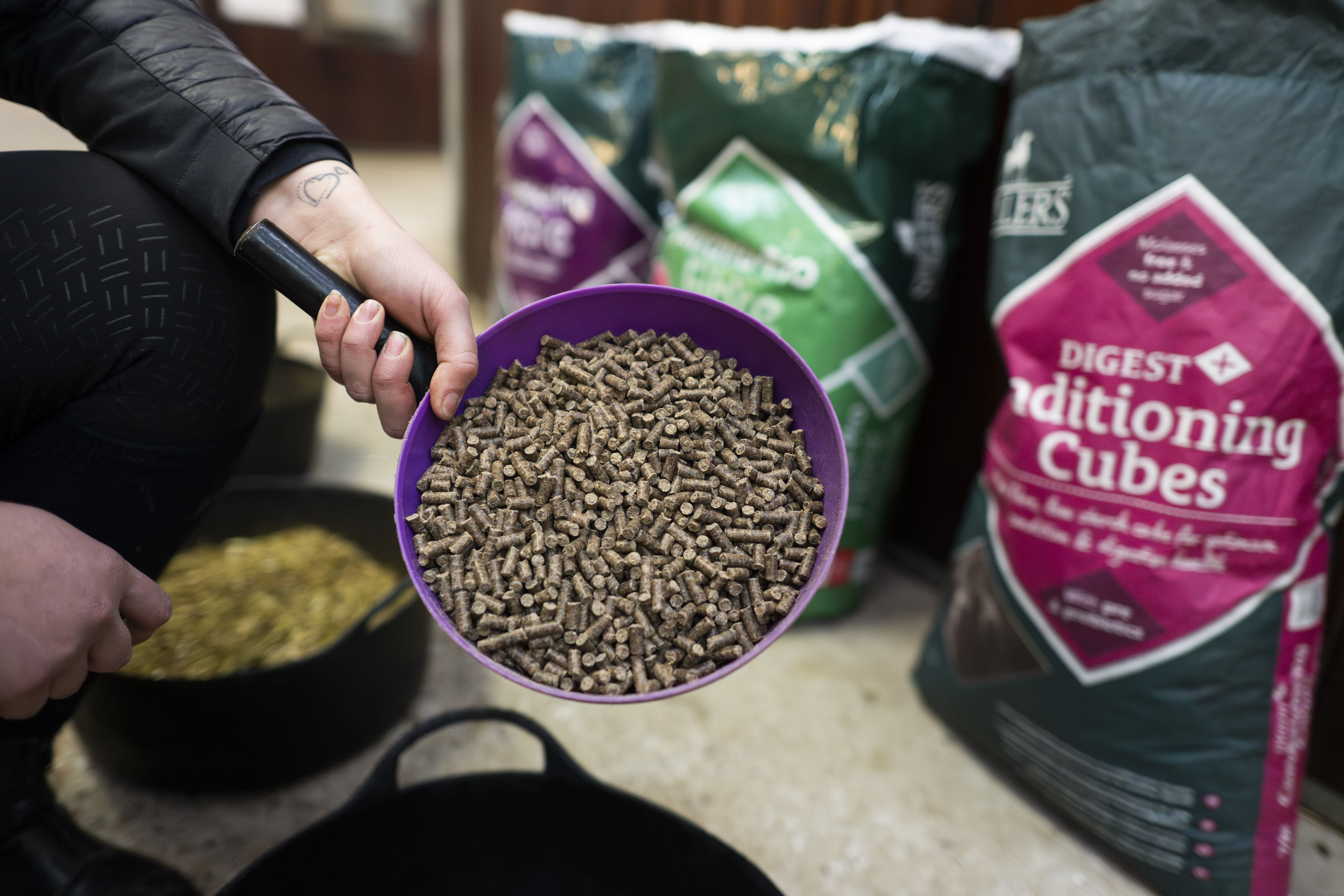
Feed Enough
Are you are feeding enough of your current feed? Check the instructions on the bag and if not, increase to the recommended amount and continue to assess their weight. Weigh all feeds at least once to ensure you’re feeding the right amount, not all feeds weigh the same and feeding by scoop isn’t always accurate. Feed a maximum of 2kg per meal (by dry weight) for horses, less for ponies
Maximise Their Chaff
Many people choose high calorie cubes or mashes but forget to use a higher calorie chaff too! High calorie, high oil chaffs help to increase fibre intake and maximise the calories in every mouthful!
Feed Little & Often
If possible, introduce a third small meal at lunch or late evening if two meals aren't sufficient. Avoid excessively large meals which are harder to digest and increase colic risk. Remember cubes are denser than mixes so help reduce the volume of meals. Some may feel ‘fuller’ after a big bowl of mash and consequently may eat less forage.
Sugar Beet and Mashes
The good old winter staple sugar beet is high in calories, low in starch, and an excellent source of highly digestible fibre. However, the increase in volume after soaking means we literally water it down. After soaking, sugar beet contains approximately 80% water, meaning a scoop of soaked sugar beet actually contains few calories but can make a horse feel full. One scoop of 'horse and pony cubes' could be five times higher in calories.
High-fibre mashes have become a popular alternative; many include added vitamins and minerals and often need less water for soaking than sugar beet. Some can be used as total or partial hay replacers - make sure you check the manufacturer’s instructions. Always weigh sugar beet and mashes before soaking to make sure you’re feeding enough.

Utilising Oil for Bonus Calories
Oils are another option for poor doers who needing more calories. 300ml of oil provides approximately the same number of calories as 1kg of oats. Oil is starch free making it a useful addition for those prone to laminitis or PPID. In reality, few people feed enough oil for it to add a significant difference to their horse’s total calorie intake. It can be unpalatable in larger quantities and high oil diets should be balanced with additional vitamin E which can make things complicated. Many higher calorie feeds include high levels of added oil and may offer a better option than adding oil on top. Consult a nutrition specialist before adding oil to your horse's feed if feeding more than 100mls per day.
Tempting Fussy Eaters
- Try not to chop and change feeds as this can upset the digestive system. Instead offer buffet style meals with their different feeds in different buckets. Many come back to the feeds they go off, some simply don’t like different feeds and textures mixed together.
- Try adding warm water in winter - this can be a game changer for those with sensitive teeth.
- Consider adding small amounts of apple juice, grated apples/ carrots, garlic, mint or fenugreek to feeds. For those reluctant to eat soaked hay try adding flavoured tea bags to make the water taste better. Always consider the risk of prohibited substances if your horse is competing under affiliated rules.
Management Ideas
Body Condition Scoring: Assess poor doers regularly – you’ll feel subtle changes before they become visible and can adjust the diet sooner if needed. You can also weigh tape weekly.
Rugging: Ensure your horse is appropriately rugged to prevent them wasting energy keeping warm or sweating.
Consider reducing their workload: For those really struggling to maintain a healthy weight, consider giving them a holiday or reducing the amount or intensity of work they’re doing. This may allow them to ‘catch up’ before they become too poor.
Behavioural Observations: Watch your horse's behaviour so you don’t miss changes to their 'normal.' Pain or discomfort anywhere in the body may reduce eating – increased/ decreased laying down, slower chewing, reluctance to eat from a haynet or to stretch down to graze. Simple changes such as moving feed bowls higher may encourage them to eat more. Consult with your vet regarding pain management.
Bullying: If your horse is in with a herd check they’re not missing out on food if they are down the pecking order. They may also be kept out of the shelter during poor weather.
Keep them Happy: Some horses hate being on a busy yard and prefer to hide at the back of their stable. Others hate being out of sight of their friends. Consider the big picture. Feed them where they’re happy to eat more and prevent them ‘stressing the weight off’.
Plan Ahead for Winter: Be proactive and aim to prevent weight loss before it starts, especially when you have a horse who struggles every winter. Introduce a higher calorie diet in the autumn before they lose weight and increase as necessary as the weather and grazing deteriorates. Provided they are not laminitic, allowing poor doers to enter winter at a body condition score of 6 out of 9 may help buffer excess weight loss. You can always reduce rations if the winter is mild or they’re doing too well!
Nutrition Consultation: Contact a nutrition specialist for specific advice, especially for horses prone to clinical conditions like laminitis, colic, gastric ulcers, or tying up. They can often see the gaps in your feeding regime and point you in the right direction. Contact us here.(open in new tab)
Veterinary Advice: Seek veterinary advice if your horse's weight loss is sudden, severe, or unexpected, especially if there have been no obvious changes in their diet or management. Speak to your vet if your horse is already on a high calorie diet and still losing weight to rule out other problems.
Here’s a few myths busted:
Balancers are unlikely to help your horse gain weight - simply because the amount of balancer you feed is small and so provides minimal calories; balancers have a low feeding rate!
Good feeding alone won’t build muscle - although feeding quality protein will help, good muscle tone can only be achieved by consistent appropriate work.
